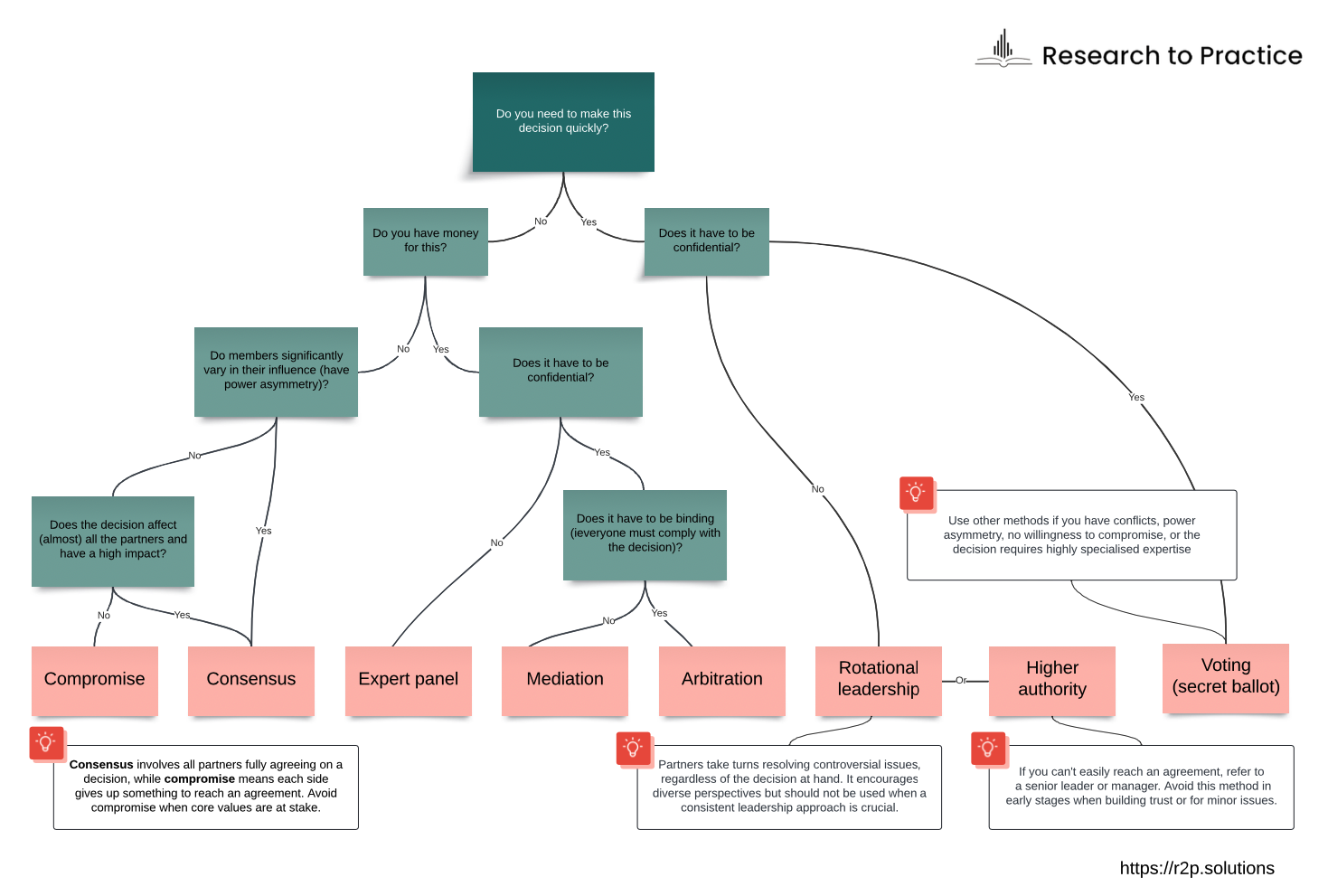Beyond consensus:
7 alternatives for efficient decision-making
This is a shorter version of the newsletter. To get the full version with tips, follow-ups, and introductions of other members, subscribe to our mailing list:
Why you do not always need consensus
I often ask network managers how decisions are made in their projects. Almost all of them say: "We discuss it until we reach a consensus."
I get it: people want consensus to keep things horizontal and egalitarian. But here's what happens when you rely on consensus too often:
Time-consuming: Real consensus takes multiple rounds of discussion, delaying progress and causing missed deadlines.
Reduced accountability: Team members may feel less responsible for the outcome since the decision was a collective one, potentially leading to issues with follow-through and responsibility.
Too much — or too little — disagreement. That’s a paradox, but attempts to reach consensus often end up in one of two extremes: 1) serious disagreements get exposed, leading to interpersonal conflicts, or 2) people avoid conflict at all costs and keep important objections to themselves → risks get overlooked → more problems down the road.
“Against all bad things, for all the good things”: decisions may be watered down to satisfy everyone, and you end up with empty phrases like “increase awareness” or “improve quality”.
Decision fatigue: People get tired when you ask them to contribute meaningfully to every decision and become less motivated to do so. If you overuse this practice, they’ll soon agree with whatever you ask just to return to their real work. I bet annoyed and bored partners are not what you wanted in the first place.
Poor quality decisions: Some decisions require expertise, just like some cases need a judge, not only a jury.
The most problematic thing about consensus, however, is that people do not have plan B. Imagine people cannot agree easily, then what? You'd better be open about the plan B, otherwise partners would be sceptical about the word "consensus" the next time.
Should we ditch consensus altogether?
Absolutely not. But save it for the most important, strategic, high-impact decisions, and when minority groups risk being underrepresented with other methods like voting or compromise. For everything else, use more efficient methods.
What are the alternatives?
There are at least seven other methods, depending on factors like time, budget, and confidentiality—check the chart below.
You will probably need a combination of methods. Here is an example from my work with a multi-partner initiative. The first step was to explain the pros and cons of alternative decision-making methods (pink boxes) to members. The second was to decide together what worked best for their partnership. For this initiative, we used three approaches:
Consensus for approving new projects or making major changes that required financial contributions from all partners;
Rotational leadership for operational decisions within the approved project budget and timeline (the chair rotates, so each member chairs at some point);
External mediation for interpersonal conflicts (we haven’t had to use this yet, but the process is clear if needed).
Your collaborations will need a different mix of methods, but even using just two—consensus for big decisions and a faster method for day-to-day ones—can save a ton of time and energy. Feel free to email me at aliona@r2p.solutions, and we can quickly review the chart to see what might work best for you.
P.S. Book recommendation
The consensus-building process is extremely rewarding and fruitful if done right. If you can, get this handbook - it is the best one out there. We’ve prepared a document that lists all the steps - and the shorter version in the next issue of the newsletter.
